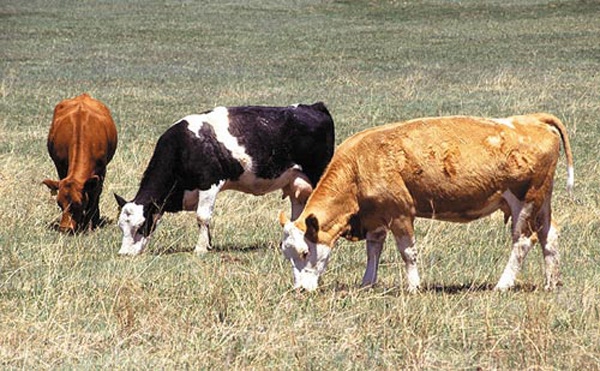April 17, 2013

Ask Robert Seay, Benton County Extension staff chair, what a wet spring means for agriculture in the state and he'll turn to one of the newspaper clippings he keeps taped to his file cabinet.
The 2004 Arkansas Democrat-Gazette story reported that 7.25 inches of rain fell on Fayetteville's Drake Field in June of that year. Seay points to a favorite quote he calls, "a classic Ozark truism."
"The rain would be good for more farmers than it would be bad," Johnny Gunsaulis, Washington County Extension agent, told the newspaper. "Farmers never root against mud this time of year because it's going to get dry!"
Indeed, the state-by-state drought monitor website at the University of Nebraska-Lincoln is already showing that portions of north central, northwest, south central, and southwest Arkansas are trending toward abnormally dry and moderate drought conditions. So a rainy start for 2013 is not being taken for granted by the state's farmers and Extension agents, especially after the painful drought of 2012.
Conditions improving
According to the Cooperative Extension Service's April 14 Crop Progress and Condition report, 43 percent of pasture and range was in good or excellent condition. Non-alfalfa hay was 42 percent good or excellent and 47 percent fair.
"We finally do have our ponds full again," said Jesse Bocksnick, Extension agent for Sebastian County. "We are muddy right now, but you can tell how bad it has been in the past due to the lack of complaining or griping by producers about the rain. Everyone is afraid to jinx the moisture and are praying that we continue to get this in June, July, and August."
The hay for the first cutting is shaping up nicely and growers are expecting to get some good production.
"The cool season grasses like rye grass have exploded with growth the last week putting on several inches of leaf which greatly increase the amount of usable forage," said Bocksnick. "We have had producers getting stuck in pastures with no complaints. When the sun is out and the wind is blowing though it seems to dry out very quickly."
But the recent lower-than-normal temperatures can also have a negative impact on fodder as the year progresses, and Columbia County Extension agent Jerri Lephiew said there could be cause for concern. “The rain has been fantastic. However, the cool weather interruptions are holding back our warm season grasses, which has livestock producers a little irritated. To me this has seemed like a much more normal spring for south Arkansas, which has me hopeful we are out of the high desert weather patterns."
Despite rain, drought impact may linger
The combination of early rain and potential later drought can have a substantial impact on the production of forage for cattle and the future development of those herds. Pope County was one of the areas hardest-hit by drought in 2012, and Phil Sims, the county's Extension staff chair, is hoping the abundant spring rain is a sign that 2013 will be less dry.
"We're cautiously optimistic," said Sims. "Pastures are covered in weeds from the lack of vegetation to protect the soil surface and the Bermuda grass is starting off real slow. The cooler temperatures have delayed the warm season grasses."
In Newton County, Extension staff chair Adam Willis said the green pastures are already prompting cattle to move off stored fodder. "Cattle are really wanting to quit eating hay and have in some cases, especially if winter annuals were planted. There seems to be an abundance of weeds in pastures."
Last year, according to a Cooperative Extension Service report, drought had a $128 million impact on the beef cattle industry in Arkansas, costing producers an estimated $141 per head. That had an impact on associated industries of $4.4 million in labor and income, and $8.1 million in value added. It also led to 3 percent of ranchers planning to sell all their livestock.
For more information on forage or cattle production, visit www.uaex.edu.
You might also be interested in:
Contaminants a thorn in the side of U.S. cotton exports
NCC stresses importance of effective STAX
A buyer’s market for urea?
You May Also Like




